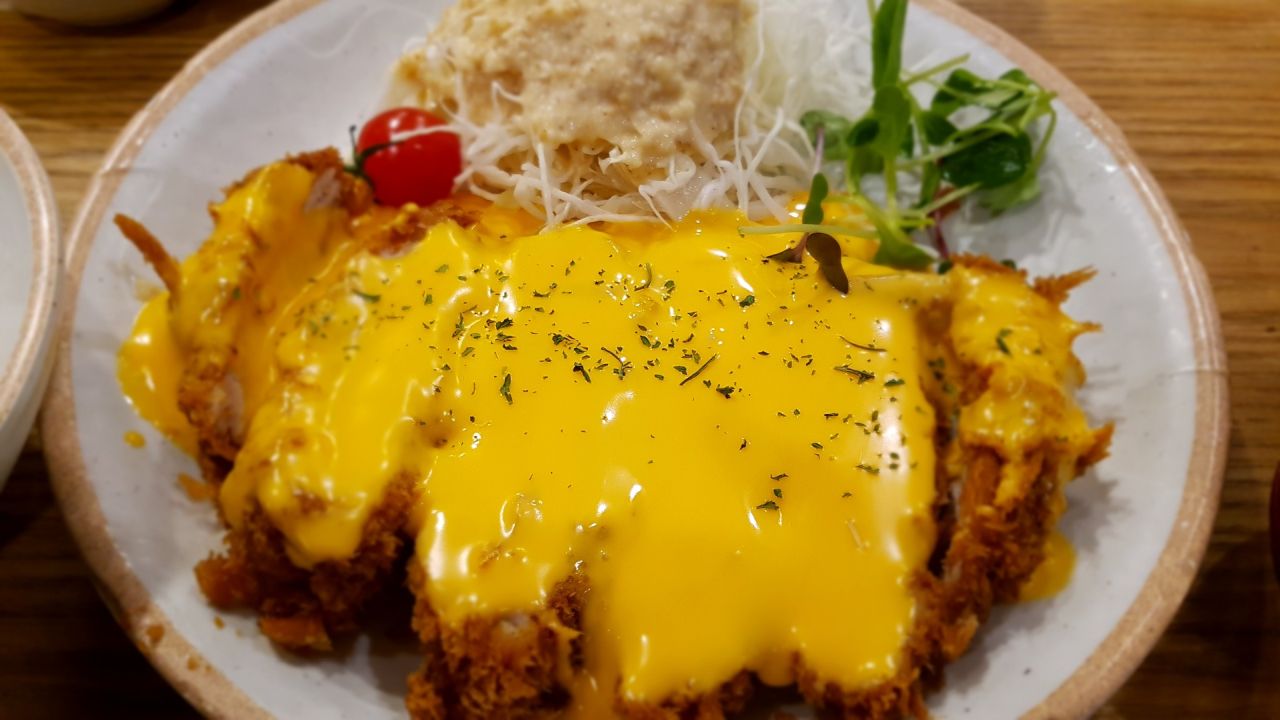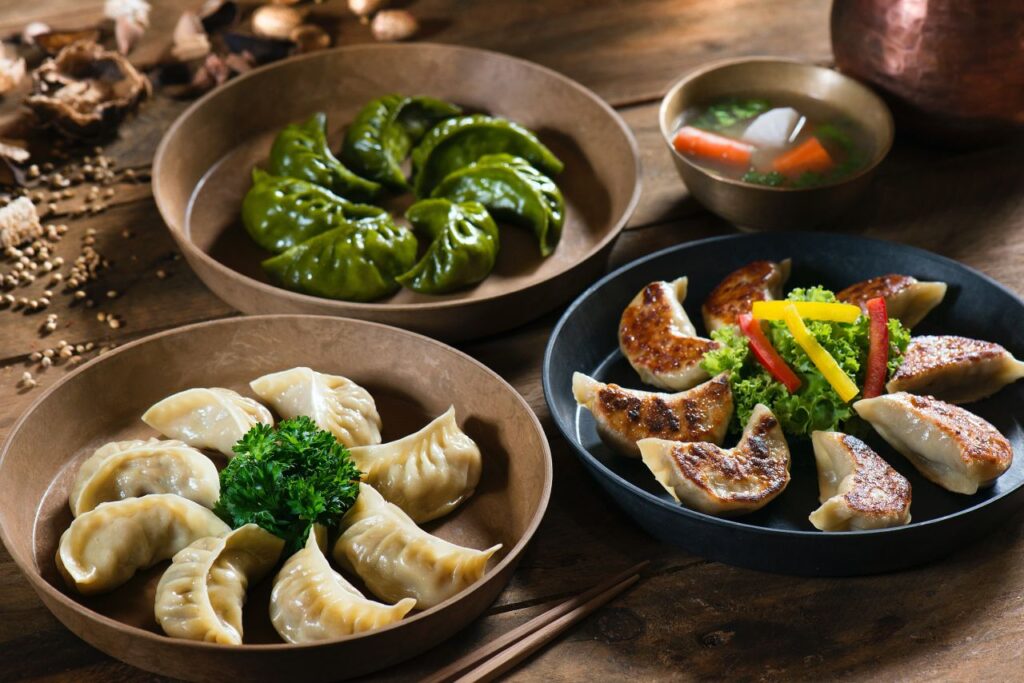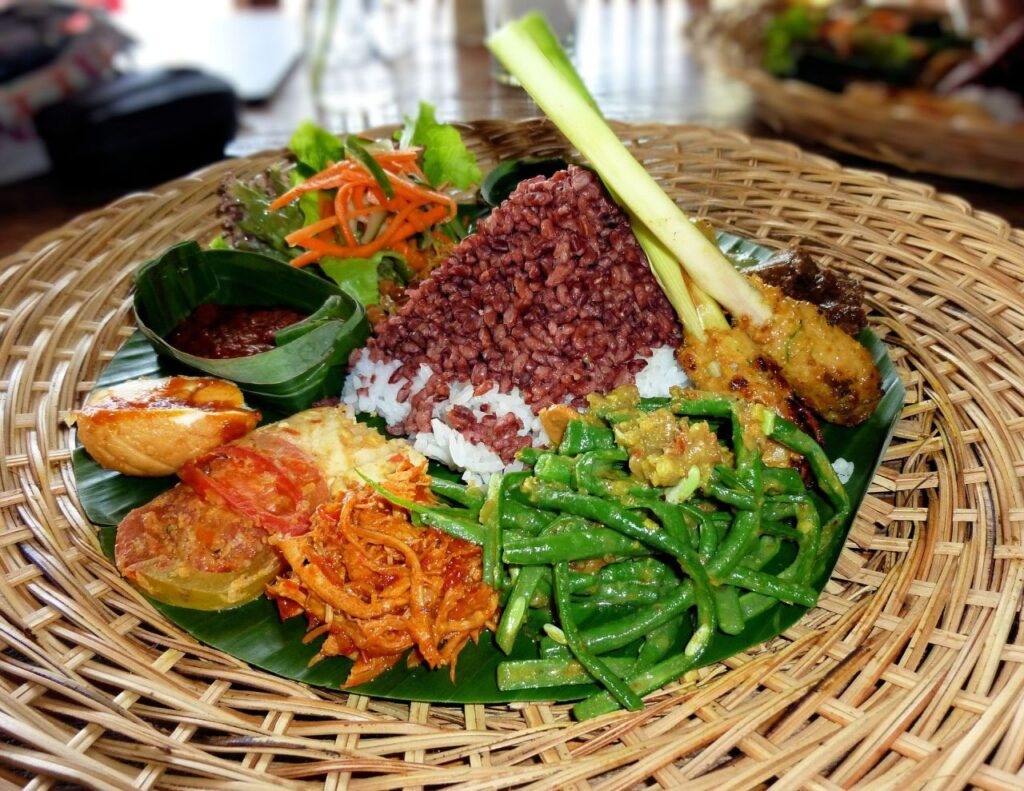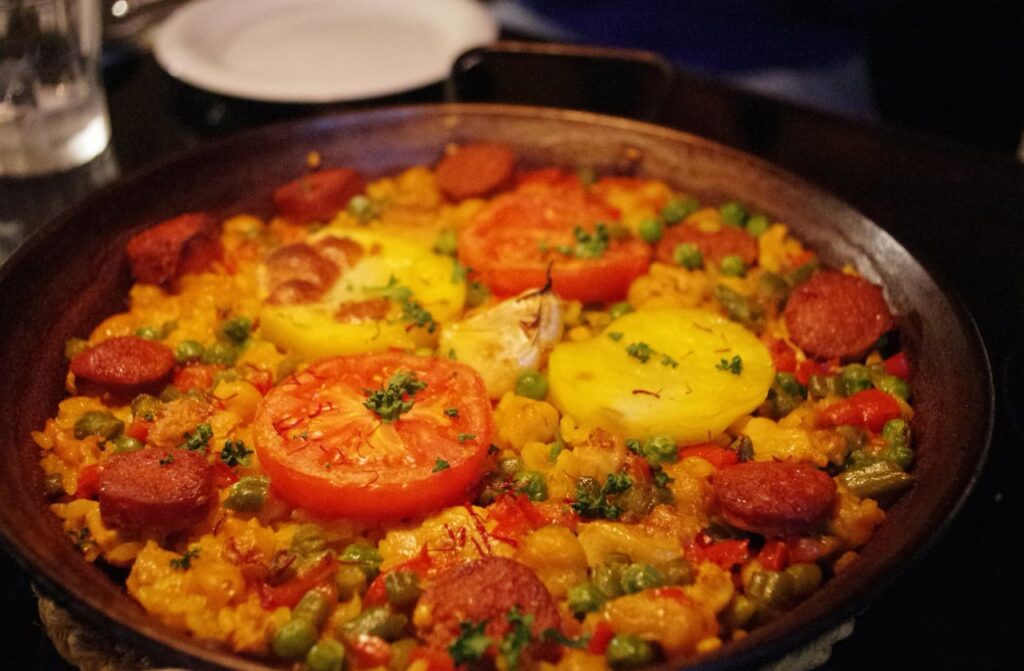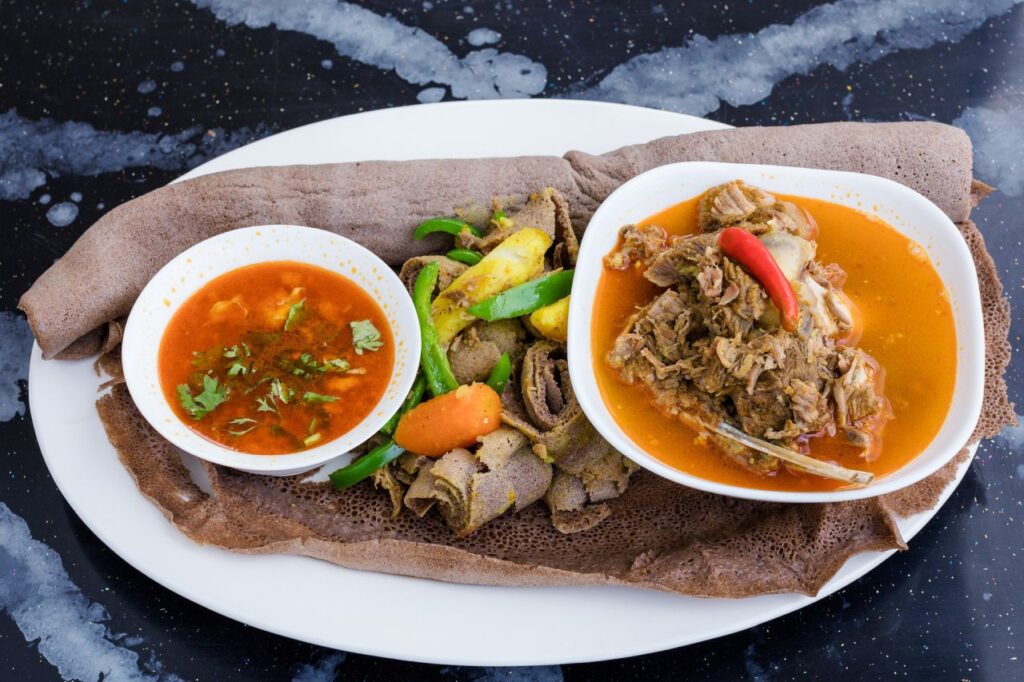Since the middle of the twentieth century, Japanese cuisine has had a considerable impact on Western cuisine. Yoshoku is the Japanese term for this aesthetic. The obsessive attention to detail required to recreate a beloved dish means that excellent pizza can be found in both Naples and Kyoto. On the other hand, this can lead to a refreshingly original Japanese interpretation of Western classics.
The katsu sando is an outstanding yoshoku example. Meat that has been breaded and fried is known as a katsu, and it is traditionally served between two slices of shokupan, a Japanese milk bread.
The Japanese kanji sando is shortened to mean "sandwich" in English. It's visually pleasing, has a range of interesting textures, & tastes extremely moreish, making it a near-perfect snack.
Katsu Sandos are everywhere in Melbourne right now and only getting more popular. Here are the best places in town to get your hands on one.
Top Katsu Restaurants In Melbourne
Katsu, a fried dish that gives more meat or fish, has a hidden ingredient: flaky Japanese panko breadcrumbs. Among the many Western cuisines that have been adapted, modified, and incorporated into Japanese cuisine is katsu, which resembles a German schnitzel.
Tamura Sake Bar
The bar's decor pays homage to traditional Japanese izakayas, creating a cosy and inviting environment for drinkers. You'll find a platter and a cashier in the middle, in which a cook would usually be. Records and bottles sake are brought from Tokyo, while bamboo plants, Hello Kitty cereal boxes, and other pieces of Japanese culture are presented against a harsh black backdrop.
Tamura's drink menu highlights third-wave sake, as well as unique research styles from artisan breweries and new producers who've already taken over operations from an older generation. Many of them are unfiltered and unpredictable like natural wine.
Alcoholic beverages are not limited to sake. Plum and yuzu wines and local artisan beers are also available for purchase. Tamura & Temple Brewing collaborated on the creation of the Tamura Rice XPA. The Coco Niseko is a Japanese-inspired cocktail made with premium coffee, rum, coconut syrup, & tonic water.
Dinner is presented in the form of a variety of small plates in the izakaya manner. Japanese fried chicken has a tantalising blend of sweet, sour, and tangy flavours. Some examples of yakitori are tsukune, an sweet chicken meatball laced with soy sauce, or chargrilled chicken thighs with such a hint of smoke.
Deep fried cod skin is similar to a huge fishy potato chip in terms of both flavour and crunch. Burnt chicken skin has an even more strong garlic flavour. Big bowls of chicken or vegetarian ramen are available, as well as the Japanese katsu chicken curry with hot pink rice, veggies, mayo, and shredded cheese. A healthier alternative is the katsu sando.
Paprika
Taking up two rooms as well as a courtyard, the 30-seat Papirica was inspired by the Ainu Japanese phrase for "excellent harvest year" and is cosy and low-key. Matsuda's personal possessions, including a bronze statue of the a Hokkaido bear, sit among houseplants, vintage furniture, an blue carpet, and blue walls.
The owner previously worked for the Carolina, Milkwood, & Manchester Press. Then he opened URA, a store in Fitzroy specialising in Japanese homewares. Some examples of the straightforward fare on offer at Paprika include okonomiyaki made in the Osaka style using mochi rice flour, cheddar, and kimchi.
Toast, scrambled eggs, & French toast with maple syrup, mandarin orange, and handmade jam are available on the limited morning sampling menu, as are teriyaki chicken or Fear or anxiety dengaku sandwiches. We'll end with a matcha tiramisu dessert. You can get both hojicha and mugicha as drinks.
Despite the fact that Matsuda's okonomiyaki has a few unusual components, it retains the dish's traditional flavour. Seed and potato, both of which are difficult to come by in Melbourne, stand in for the more customary Japanese yams in his batter.
He makes a lot of the ingredients himself, such as the replacement tenkasu and the deep-fried dried soybeans in sesame oil. To top it all off, he makes his own yakitori sauce from scratch using the standard ingredients of ketchup, Sauce, and MSG. In my opinion, his reading is the more credible one.
Gypsy & Pig
There are two kinds of katsu curry available at Gypsy & Pig, a Little Club Street secret gem, and one of them is made using kurobuta loin, the most prized cut of pig in Japan.
In either scenario, you're obtaining premium protein thanks to the utilisation of alternatives like depths crumbed free chicken. Green tea cheesecake & deep-fried Scotch eggs made from recycled materials are delicious options for a meal's outset.
Le Bajo
Le Bajo is an old warehouse decorated to evoke an Indonesian fishing hamlet, where Japanese food is served. It's an unusual pairing, yet it works. Covid struck just as one half of the team behind Bali's Pumpkin Head Beach Resort business was planning to start building a club and hotel in Labuan Bajo, a fishing village situated on the huge Indonesian island of Flores. During his time in Melbourne, he opened Le Bajo, a Sando-themed cafe that took up 100 sq m of his enormous garage in North Melbourne. It's right across from his magnificent garage full of classic Mercedes and Porsches.
Le Bajo was first released in 2020. While Gunawan's birthplace was Sydney, Australia, he has lived in both Indonesian and his own country. The cafe he regularly visits is 279, and it's not far from his Melbourne warehouse. Further, he was successful in convincing the company's owner, Kantaro Okada, would back his new venture, Le Bajo.
Okada's menu kicks off with a selection of snacks. The set includes a steamed egg, a restricted pot of yoghurt, a batch brew of coffee, and a thick slice of home-baked shokupan.
The red bean spread known as ogura is among the nine toppings that can be added to your toast. A Tamago, or egg, sando is also available. Customers who prefer more conventional lunch options commonly eat the spicy fried chicken katsu. Early afternoon or late morning massive web of networks of cabbage and miso sauce. Legendary status in its industry. Conversely, you can get a vegetable-filled sando and a tartare of Ebi (prawns) flavoured with wasabi. Dirty fries are served with your choice of teriyaki butter and seaweed miso mayo.
Fruit sandos are more out-of-the-ordinary and can be found in the fridge; they consist of vanilla ice cream and slices of fruit including strawberries, kiwi, and mango sandwiched between crustless shokupan. You can get the light bread in full or half loaves. Due to his pathological love for traditional Australian milk bars, Gunawan recreates their sodas, spiders, & milkshakes in his own kitchen. Sponge cakes offered with Japanese tea are so delicate that they often disappear before midday.
The steel-tube tables, bar stools, and old china all came from the market or secondhand stores in the area. Gunawan's garage is separated from Le Bajo's breezy minimalism by a rack for bicycles and some plants that have overrun the industrial firewood shelf.
Ways Japanese Dining
The cosy atmosphere of this Flemington treasure makes it ideal for a casual Japanese lunch. For the past two years, diners have been able to choose from the restaurant's honest and straightforward lunch menu.
Both chicken katsu or beef menchi katsu are panko-crusted cutlets, although the former is made with chicken and the latter with ground beef. Both of them together cost only $13. Yum!
KUU Cafe
A visit to KUU Cafe will not yield any sushi rolls or okonomiyaki. The tiny cafe's menu deviates significantly from the standard fare of Japanese restaurants in Melbourne. A innovative fusion between Japanese and Western flavor, the restaurant's menu features tasty and nutritious dishes perfect for breakfast, lunch, and dinner.
Sumire and Tatsuya Kawakami, the shops and cafes Japanese owners, worked together to create the cafe's food and atmosphere. Each one vividly depicts the best of both Japan and Melbourne. White brick pavers, plaster facades, pastel porcelain bowls, and a handful of houseplants combine to make a bright and airy atmosphere. The Japanese Breakfast Platter for the Starving includes two onigiri spring rolls, two sandwich, a poached egg with white sesame red salsa, grilled salmon, with miso soup.
The Taco Rice KUU Zen is a popular lunch option that consists of brown rice, chicken meat, tacos sauce, an omelet, mozzarella, tomato relish, avocado, and a side salad.
Those in a rush will be happy to know that KUU has both a deli and a takeaway service. If you're in a rush, pick up a soy or chicken panko baguette as well as a cup of coffee to go. Green tea lattes are a terrific choice if you want to switch things up. Sumire's mum travels from Kyoto to deliver the matcha.
Yong Green Food
Yong's tofu katsu curry is so good that even people who don't like tofu end up ordering it. Served with a mountain of brown rice and savoury curry sauce, the baked tofu patty is flavored with mushroom and seaweed before being coated in natural quinoa batter. You can't tell the difference between this vegan katsu curry and the real thing, plus it comes with a serving of slaw and pickles.
Saint Dreux
The fundamental components are soft white bread, meat that has been fried in Panko bread crumb, mayonnaise, & tonkatsu sauce. In Japan, you may get a katsu sandwich (or cutlet sandwich) at any restaurant or vending machine. Saint Dreux is revered as the protector of the city.
A sandwich from the menu will come in a simple black box. Two crustless, white slices can be removed with one hand. There are a variety of meats from which to choose, including chicken, Kurobuta pork, shrimp, and Wagyu. Prices range from $14 for chicken to $28 for Wagyu.
This may seem like an inordinate amount of time to a sanga with fair complexion, but bear in mind there is significantly more going on here than at your average sandwich shop. Saint Dreux also offers Castella, a Japanese-style cheesecake with Portuguese origins. For optimal moisture retention, these cakes were baked in a wooden frame. Additional choices include matcha, black sesame, & hojicha. Like the sandwiches themselves, these bite-sized squares are simple, mild, and immaculate.
Both the espresso beans and the pour-over beans for Onibus Coffee's pour-over brewers originate from the acclaimed Japanese roasting company, A coffee. Matcha lattes and cold foam filters are also available.
Future Future
As soon as you sit down at Future Future, a member of the staff will bring you a bowl with sweet potato crisps & your choice either camomile, green, and mandarin rind tea. You can tell this isn't your typical Japanese restaurant by looking at the exposed brick, damaged walls, or pixelated screen decals.
Delicious food that's simple to get your hands on. The stark lack of ornamentation in this piece is what makes it so refreshingly original. Raw slices of Wagyu cut loin are served on a bed of wasabi-flavored crème fraiche and garnished with toasted vegetables. Raw tuna cubes are served with a mousse-like mixture of tofu made in-house from either regular milk or pureed avocado. The Sorano, a tofu restaurant in Tokyo, is where this recipe was first created.
The heavier end of the menu include items such as Wagyu sirloin marinated in miso over ten days, fried hapuka with seaweed citrus butter, and gigantic okonomiyaki, a matcha crepe stuffed to the gills with cabbage, onion, pickled ginger, Japanese marinara sauce, and Kewpie mayonnaise.
The provolone provides a base for the umami taste without making the dish overly heavy. The restaurant also provides donburi bowls & yakitori skewers grilled over an open flame. At the end of the dinner, for only $5 total, you can wash it down your meals with some refreshing sparkling cucumber water, which will eliminate any remaining flavours.
Rice Workshop
Katsu curry with chicken? After you place an order, it won't be long before it's ready.
Do you get the impression that it was cooked slowly and carefully? No. Can We expect a low floor of crumbed black chicken on top of a pile of snow-white rice, and is it a good alternative for Don Dons when they are busy? Yes. Fight for your place in it.
Cibi
Since 2008, business at this Japanese cafe had increased dramatically in comparison to the Tokyo Bridge. It is managed by husband-and-wife team Zenta Tanaka & Meg Tanaka. The location, formerly a clothes warehouse, has been renovated into a chic, unassuming shop selling high-end Japanese tableware and home goods.
You can discover homemade Italian food, French dijon, local grape juice, craft beer beer cheese, tofu, and takeout dinners in the fresh food & pantry section.
The open arrangement of the kitchen makes it feel both spacious and cosy.
The homewares shop's counters are made of wood, and it's decked out in largely antique fixtures. At the back of the shop is a long, one shelf that serves as both display space and extra seats for events like demonstrations and workshops. Unfortunately, the dining room chairs and tables don't match each other. There are a lot of people eating lunch and working on their computers or eating dessert in peace.
For example, you can order grilled seafood and seafood, tamagoyaki, greens, rice, or miso soup for breakfast. Every month, we switch out one of our "full" lunch options—like the chicken soboro buckets or the veggie curry—for a new one. This dish combines one fish with three different vegetables and grains.
One variation includes seared salmon, peony root round stuffing with tofu and mushroom, sweet-sesame butternut, broad casserole, and cereals or quinoa with soy sauce. All of the components, including the yuzu soup and rice blends, are prepared in house.
Izakaya Chuji
More than a hundred meals can be found on the menu at Izakaya Chuji, which is nestled between Chinatown as well as the Greek quarter in Melbourne's CBD. Don't let that dissuade you, though, if you're on lookout for the city's finest katsu curry.
Traditional dishes such beef curry with pork schnitzel and rice are available, as are more adventurous options such as the katsu don, which features pork, schnitzel, onions, and egg.
Bakemono
The bakery is housed in a modest apartment off Drewery Lane, just off a bustling stretch of Little Lonsdale Street. Little Rogue, to which Bakemono is related, is the only other bar in the crowded region. As a result, fewer options when it comes to munchies. You may get danishes at three different heights, and fill them with everything from blueberries & custard to Nutella with fresh berries to bits of apple & pureed rhubarb.
Both traditional cream cheese croissants and yuzu-infused almond croissants are available. Light and fluffy Japanese bread called shokupan is served at midday, and canelés are also on the menu.
Then there's the shokupan's Korean counterpart, garlic bread, which is also a hot commodity but for a different reason: its dough is never fresh. The dough is baked into dome-shaped buns, then split, the cheese is added, and the whole thing is dipped in a wine sauce and baked again.
This cafe's minimalist design was inspired by the clean lines of bakeries and cafes in Japan and Korea and was the result of a collaborative effort. Large windows bring in plenty of daylight, the façade is finished in timber, as well as the interior is predominantly white with black and brown details. A Japanese maple tree, its leaves small and orange, stands in the centre of the room.
Bakemono uses coffee from either a different provider, Small Batch, than Rogue and Scurry Coffee Brewers, another of the trio's businesses. Mörk is responsible for the piping hot chocolate, while once a week they brew their homemade chai concentrate to use in the lattes.
Hibiki
Brunch at Reiji Honour's Hibiki, a Japanese restaurant he owns, is greatly inspired by his mom's cooking. Okonomiyaki is an example of a food that fulfils the bill. A cabbage and spring onion pancake is topped with water buffalo sauce, Kewpie mayonnaise, pescado flakes, nori, & (optional) bacon.
The white bread known as milk toast is another favourite. It can be ordered simple, with a chilled butter cube, or as part of a dessert of matcha yoghurt mousse with black sesame. Pear & fruit compote, yuzu crème fraiche, toasted grain, fresh raspberries, and chopped orange top the organic oats in almond milk that serve as the foundation for the yuzu porridge.
A bowl of tuna tataki might include of fresh avocado, shredded side dish and carrots, pickled ginger, and edamame. On the a bed of brown rice & quinoa, it pairs well with either tuna or chicken karaage. Tasty tamagoyaki strips are complemented by the crunch of sesame and the softness of seaweed that has been cooked slowly. In this take on chai, traditional Indian spices like spice and cardamom are combined with Japanese tea as well as a black sugar syrup.
The brew is supplied by Industry Beans, who highlight a rotating roster of Japanese bean suppliers like Lilo Coffee Roasters of Osaka.
The interior is clean and contemporary thanks to the use of blonde wood, touches of green, and concrete accents. Respect for music is an honour in itself. He makes a different mixtape every day, which may have anything from Japanese funk to "throwback," disco, and house.
Benchwarmer
Benchwarmer is a casual beer garden and takeout bottle shop with a menu that is both accessible and distinctive due to its emphasis on beers from all over the world. Whenever the sun is out, customers flock to Victoria Street's outdoor seating areas. The back, artificial turf bar area is a safe haven, though, if the weather gets foul.
You can choose from a large number of long tables or cosy window seats inside the main eating area. The hall's white walls and tall arches let in plenty of natural light during the day, while the brilliant red and purple lights illuminate the space beautifully at night. A few of tables next door are ideal for a romantic dinner for two since they provide a view of the open kitchen, where the chef creates izakaya-style small meals.
The yakitori is the big show stopper on the menu, but the kaarage chicken, asparagus, or tempura mushroom are all tasty options as well.
Chiu worked the hibachi at the Michelin-starred Taipei restaurant Yuu, which specialised in Wagyu, before relocating to Melbourne, where he cooked at Supernormal and the now-defunct Nieuw Amsterdam.
Skewer some chicken pieces or Wagyu as an entry point, and then begin to progress to a more daring chicken heart, gullet, or liver. Everything is great, and it goes down easy with a frosty beverage.
None of the beers available at Benchwarmer are regular, everyday options. If a lager from a well-known brewery is listed among the beverage options, there's a strong chance you've never had it before. Sydney's own One Drop, as well as other regional favourites such As the Mill and Hop Nation, are regularly featured on the bar's nine taps.
Other notable international brands such as Gweilo, Cervisiam, Mikkeler, & Garage Beer are also heavily represented.
There's no beer in the fridges, so help yourself. Growlers and squealers are also available, a throwback to the days when Benchwarmer was in Covid lockdown.
There are a few hard seltzers and a well-curated collection of sake, as well as a wide variety of wines, many of which are produced locally by companies like Jamsheed.
Conclusion
The katsu sando is an excellent illustration of the profound influence Japanese food has had on Western cooking. Katsu, a type Japanese fried food that typically contains more meat or fish, is sandwiched between two pieces of shokupan. The plate and cashier in the centre of Tamura Sake Bar are nods to the design of classic izakayas in Japan. Third-generation sake and experimental beer styles from craft breweries and up-and-coming companies are featured on the drinks list. With high-quality coffee, rum, coconut syrup, and tonic water, the Coco Niseko is a cocktail with a decidedly Japanese flavour profile.
The dinner is served in the style of an izakaya, with a variety of small meals. The Ainu Japanese word meaning "good harvest year" served as inspiration for Paprika, a 30-seat Japanese restaurant in Fitzroy. The proprietor of URA, a boutique in Fitzroy specialising in Japanese homewares, has worked for the Carolina, Milkwood, and Manchester Press. Osaka-style okonomiyaki, prepared with mochi rice flour, cheddar, and kimchi, is available at Paprika, as are toast, scrambled eggs, and French breakfast with maple syrup, mandarin orange, and homemade jam, as are teriyaki chicken or Fear or Anxiety dengaku sandwiches and matcha tiramisu. Two varieties of katsu curry, using Japan's most prestigious pork cut (the kurobuta loin), may be found at the Little Club Street hidden gem Gypsy & Pig.
When the partners behind Bali's Pumpkin Head Beach Resort business were planning to develop a club and hotel in Labuan Bajo, a fishing community on the massive Indonesian island of Flores, Covid struck. His massive North Melbourne garage was transformed into Le Bajo, a cafe with a Sando theme covering one hundred square metres of floor space. A steamed egg, some strained yoghurt, some batch-brewed coffee, and a thick slice of homemade shokupan are on the menu. Fruit sandos are more out-of-the-ordinary and can be found in the refrigerator; they are stuffed with fruit and served with teriyaki butter and seaweed miso mayo. Everything from the steel-tube tables and bar stools to the vintage tableware was sourced from local markets and thrift shops.
Chicken katsu or beef menchi katsu at KUU Café, a creative hybrid of Japanese and Western cuisine, for just $13. Two onigiri spring rolls, two sandwiches, one poached egg with white sesame and red salsa, one piece of grilled salmon, and a bowl of miso soup make up the Japanese breakfast platter for the starving. Brown rice, chicken meat, tacos sauce, an egg, mozzarella, tomato relish, avocado, and a side salad make up the Taco Rice KUU Zen, a popular lunch option. Get your coffee and a soy or chicken panko baguette to go from the deli, or use the takeout option. Sumire's mum flies in from Kyoto to bring the matcha.
There is a vegan katsu curry at Yong Green Cuisine that is so wonderful that even folks who don't like tofu wind up ordering it. Saint Dreux, the city's patron saint, is known for its wide selection of delicious meats such chicken, Kurobuta pork, shrimp, and Wagyu. Onibus Coffee's pour-over brewers use beans roasted by the renowned Japanese brand A coffee, and Future Future sells sweet potato crisps, camomile tea, green tea, and mandarin rind tea. What makes this painting so novel and fresh is the fact that it has almost no decoration at all.
Content Summary
- The influence of Japanese food on Western cooking has been growing since the middle of the twentieth century.
- On the other side, this can inspire a uniquely Japanese take on well-known Western works.
- The katsu sando is a fantastic illustration of yoshoku at its finest.
- "sandwich" in English is a katakana version of the Japanese kanji sando.
- At the moment, Katsu Sandos are extremely popular in Melbourne.
- Where to Get the Best Katsu in Melbourne Katsu, a fried dish that conceals extra meat or fish, using flaky Japanese panko breadcrumbs as a secret ingredient.
- Katsu, which is similar to German schnitzel, is one example of the many Western dishes that have been adapted and incorporated into Japanese cooking.
- The crunch and flavour of deep-fried cod skin are not unlike those of a giant fishy potato chip.
- Chicken and vegetarian ramen, as well as Japanese katsu chicken curry over hot pink rice with vegetables, mayonnaise, and shredded cheese, are both available in hearty bowls.
- Paprika The Ainu Japanese term for "good harvest year" served the inspiration for the 30-seat Papirica, which occupies two rooms and a patio.
- The proprietor has experience at the Carolina Daily News, the Milkwood News, and the Manchester Press.
- Afterwards, he started selling Japanese-themed home goods in Fitzroy at his shop URA.
- Osaka-style okonomiyaki with mochi rice flour, cheddar, and kimchi are just a few samples of the simple food on offer at Paprika.
- Matsuda's okonomiyaki, while incorporating certain non-traditional ingredients, is nevertheless true to the original.
- He substitutes seed and potato for the more common Japanese yams because of their scarcity in Melbourne.
- Many of the ingredients, like the substitute tenkasu and the deep-fried dried soybeans in sesame oil, are his own creations.
- In addition, he whips up his own yakitori sauce from scratch using pantry staples like ketchup, Mayonnaise, and MSG.
- Romany & Swine Gypsy & Pig, a hidden gem on Little Club Street, serves two varieties of katsu curry, one of which features kurobuta loin, Japan's most coveted pork cut.
- When the partners behind Bali's Pumpkin Head Beach Resort business were planning to develop a club and hotel in Labuan Bajo, a fishing community on the massive Indonesian island of Flores, Covid struck.
- Le Bajo, a Sando-themed cafe, was opened in his massive North Melbourne garage during his tenure in Melbourne. It was 100 square metres in size.
- Gunawan was born in Sydney, Australia, but he has also spent time in Indonesia.
- He also managed to get Kantaro Okada, the company's owner, to support his new business, Le Bajo.
- Included in the set is a steamed egg, a small container of strained yoghurt, a large pot of coffee, and a thick slice of homemade shokupan.
- Because of his unhealthy obsession with classic Australian milk bars, Gunawan often makes homemade versions of sodas, spiders, and milkshakes that taste just like the originals.
- This eatery has been offering a straightforward and honest lunch menu for the past two years.
- Café KUU Sushi rolls and okonomiyaki are not available at KUU Café.
- The menu at this modest cafe is very different from what you would get in a typical Japanese restaurant in Melbourne.
- The restaurant serves delicious and healthy meals for breakfast, lunch, and dinner that are a creative combination of Japanese and Western flavours.
- The cafe's food and ambience are the result of a collaborative effort by the Japanese proprietors, Sumire and Tatsuya Kawakami.
- You can see the finest of Japan and Melbourne in each one.
- In case you're ever in a pinch, know that KUU offers both a deli and a takeout service.
- Grabbing a soy or chicken panko baguette and a cup of coffee to go is a great option if you're in a hurry.
- Healthy Young Food Even those who claim to not like tofu often find themselves eating Yong's tofu katsu curry.
- This vegan katsu curry tastes just like the real thing and features a side of slaw and pickles for good measure.
- A katsu sandwich (also known as a cutlet sandwich) is widely available in Japan.
- Saint Dreux, the patron saint of Dreux, France, is widely honoured for his role as protector.
- A menu sandwich will be delivered in a plain black container.
- There's also Castella, a Japanese-inspired cheesecake with Portuguese roots, available at Saint Dreux.
- This is the Future You can choose between camomile, green, or mandarin rind tea, plus a dish of sweet potato snacks, served as soon as you take a seat at Future Future.
- The exposed brick, broken walls, and pixelated screen decals all indicate that this isn't your normal Japanese restaurant.
FAQs About Katsu Food In Melbourne
Katsu Sandos are traditionally made with panko-crumbed pork, mayonnaise, tonkatsu sauce, which combines the flavours of Worcestershire sauce, soy sauce and tomato ketchup on white bread. At Saint Dreux, the guys are crumbling and frying everything from Kurobuta pork and chicken to wagyu beef and prawns.
The recipe for a traditional katsu sandwich is simple. Take one Panko-crumbed pork cutlet and deep fry. Add shredded cabbage and two big squirts of tonkatsu sauce and mayonnaise. Stack these ingredients inside the fluffiest, cheapest, Tip-Top-iest white bread you can find.
The chicken katsu is panko-crumbed, and there’s also a beef menchi katsu on offer: that’s minced beef cutlet coated with panko breadcrumbs. Both will only set you back $13. Yum!
Katsu can come as part of a set meal (teishoku), as a rice bowl (donburi), with curry (curry katsu), or as a sandwich (katsu-sando). The most common is a teishoku set, where it's served with rice, cabbage, pickles, and sauce.
Katsu is a crispy fried cutlet of meat or seafood made with flaky Japanese panko breadcrumbs. Similar in form to a German schnitzel, katsu is one of many Western foods that has been adopted, adapted to suit local tastes, and become a key part of Japanese cuisine.


